

In this post, I share information about how and when to teach students CVC Words. I share a FREE printable CVC word list and finally, I offer FREE CVC activities and resources for you to use in your Kindergarten, first or second-grade classroom.
CVC words, or consonant-vowel-consonant words, are some of the very first words we teach our young students to read and write. This is because each letter in a CVC word usually makes the sound we expect it to make! These words are the building blocks for phonics skills to come. Students need explicit instruction and meaningful practice to ensure they can easily read and write these words.
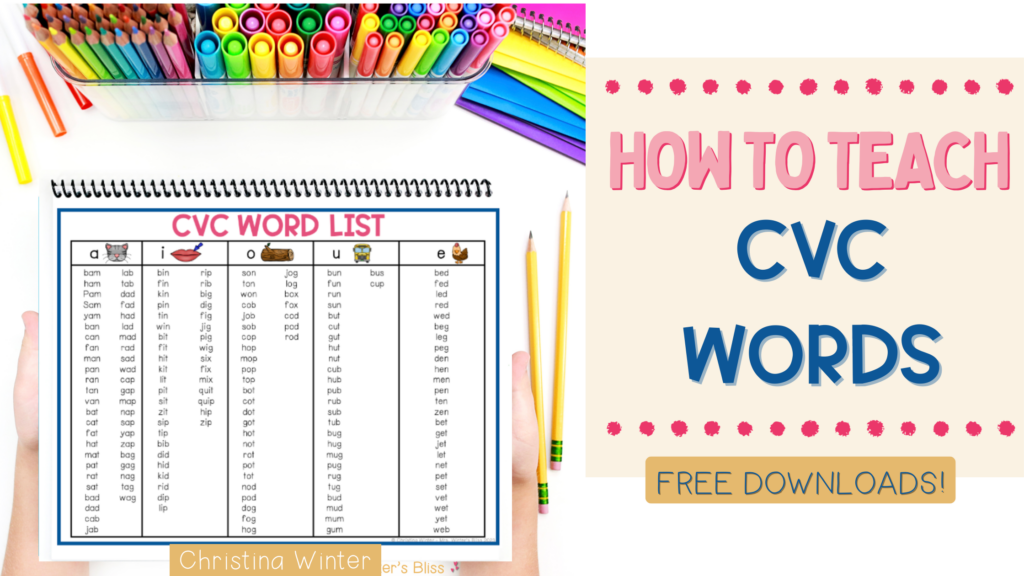
Today I am happy to answer many of the questions I receive about how and when to teach CVC words. I suggest activities and resources that provide your students with the meaningful practice they need to master these words. Finally, I leave you with FREE CVC activities you can use in your classroom right away!
What is a CVC word?
A CVC word is a word made up of 3 letters: a consonant, a vowel, and another consonant. Mat, fed, dot, and kid are all examples. These words follow simple phonics rules, meaning each letter makes the sound we expect it to make. The vowel makes a short sound because it is a closed syllable.
To help you with your instruction, I am happy to offer you FREE phonics skills word lists! In one download you’ll get word lists for CVC words, Blends, Digraphs, Long vowels, R-Controlled vowels, Diphthongs, and Multisyllabic words!

Drop your email below to instantly receive these FREE Phonics Skills Word Lists!
*please consider using a personal email address as strong school filters often block emails
Why teach CVC words?
CVC words serve as building blocks for phonics skills to come. They help students understand that words have a beginning sound, a middle sound, and an ending sound. Together these sounds create a word. When students learn to read CVC words they learn about blending (stringing together of letter sounds to read or say a word) and segmenting (breaking a word into its separate sounds). These are two skills students will rely on as they progress in their reading.

Finally, students can usually learn to decode CVC words quickly. This serves as a great confidence booster and builds their enthusiasm for reading.
When to Teach CVC Words
Before you teach CVC words, students need phonemic awareness. This is the knowledge that spoken language is made up of sound units. Phonemic awareness is oral and auditory. It focuses on the sounds in words.
Examples of phonemic awareness include:
- recognizing words that begin with the same sound
(“Run, Rake, and Risk all have /r/ at the beginning.”) - isolating and saying the first or last sound in a word
(“The beginning sound of bat is /b/.” “The ending sound of cat is /t/.”) - combining, or blending the separate sounds in a word to say the word
(“/t/, /a/, /g/ – tag.”) - breaking, or segmenting a word into its separate sounds
(“up – /u/, /p/.”)
As a reminder, phonemic awareness is NOT visual. It is oral and auditory. When you introduce CVC words, you are now adding the visual component- the written letters.
Students do NOT need to know every single sound before you introduce CVC words, but they DO need to know the sounds of the letters they are working with. You can introduce CVC words as soon as students have learned letters that you can blend to make a word.
How to Teach CVC Words
A first step in teaching CVC words is to get students to understand that these words have the same pattern: consonant-vowel-consonant. Explicitly teach students these words have beginning, middle, and ending sounds. Visually show them where these sounds are in the word. Point to the sound as you make it. Start with the beginning sound, move to the middle, and then make the final sound.

One tip for teaching these words is to start with words that begin with continuous sounds. These are sounds that can be produced in the mouth without a “stop” of air. Letters that make continuous sounds include f, l, m n, r, s v, z. It is easier for kids to blend words that begin with these letters.
While there is no one best way to teach CVC words, we do know that effective phonics instruction must be systematic. The key to ensuring your instruction is systematic is to follow a research-based scope and sequence.
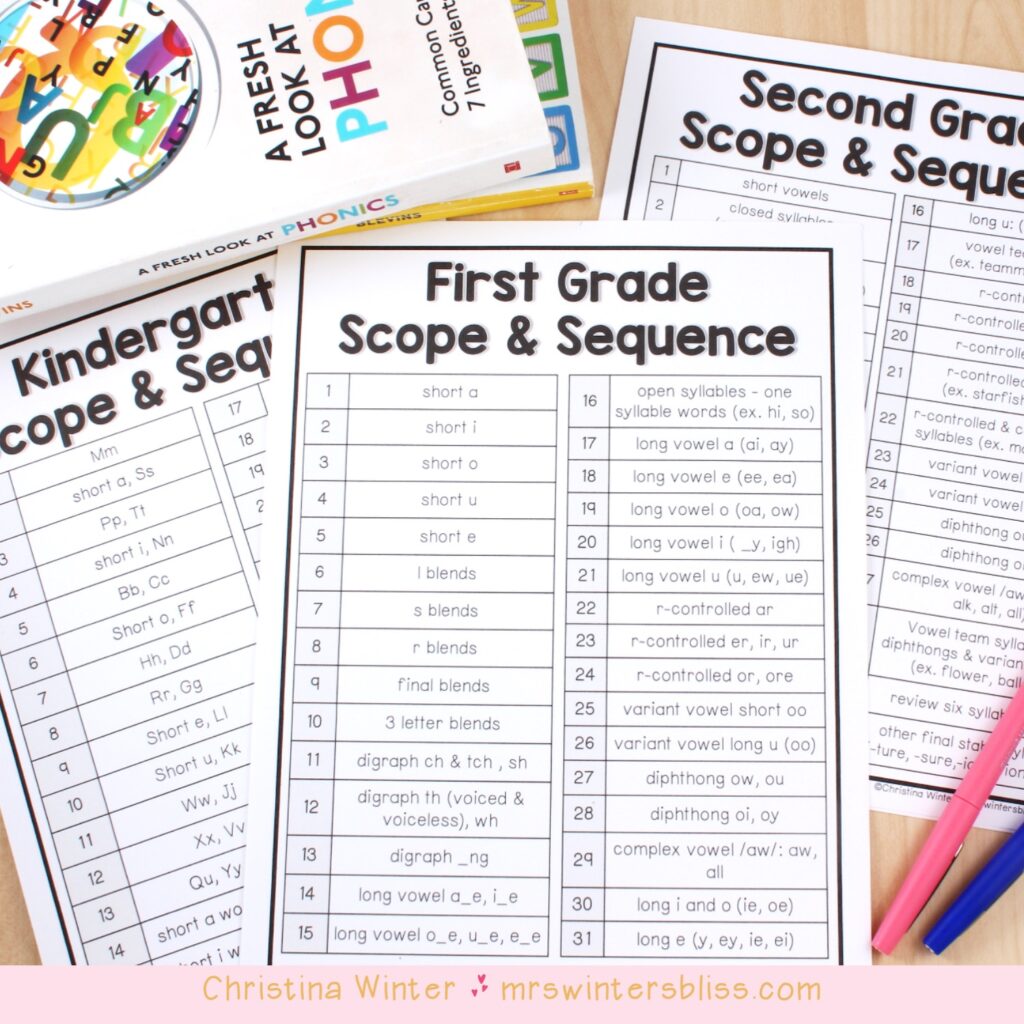
Does your school provide you with a research-based scope and sequence to guide your instruction? If not, you can download a FREE K-2 science of reading-aligned phonics scope and sequence here.
✏️ This scope and sequence starts with the simplest phonics skills and builds to the most complex, always building on previous learning.
✏️ It teaches students to form words as early as possible.
✏️ It teaches high-frequency sounds before less useful sounds and minimizes learning interference.
FREE CVC Word Activities and Resources
We must offer students plenty of opportunities to work with, practice, and review CVC words. Fortunately, there are many engaging, low-prep, SoR-aligned CVC word activities to choose from. Let’s take a closer look at a few of my favorites…
1. FREE CVC Decodable Books and Passages
A decodable text is a text you use in beginning reading instruction. It is a story that is controlled based on the phonics skills you have taught your students up to that point in your scope and sequence. Once students have received explicit instruction with CVC words, you can begin to use decodable books and passages!
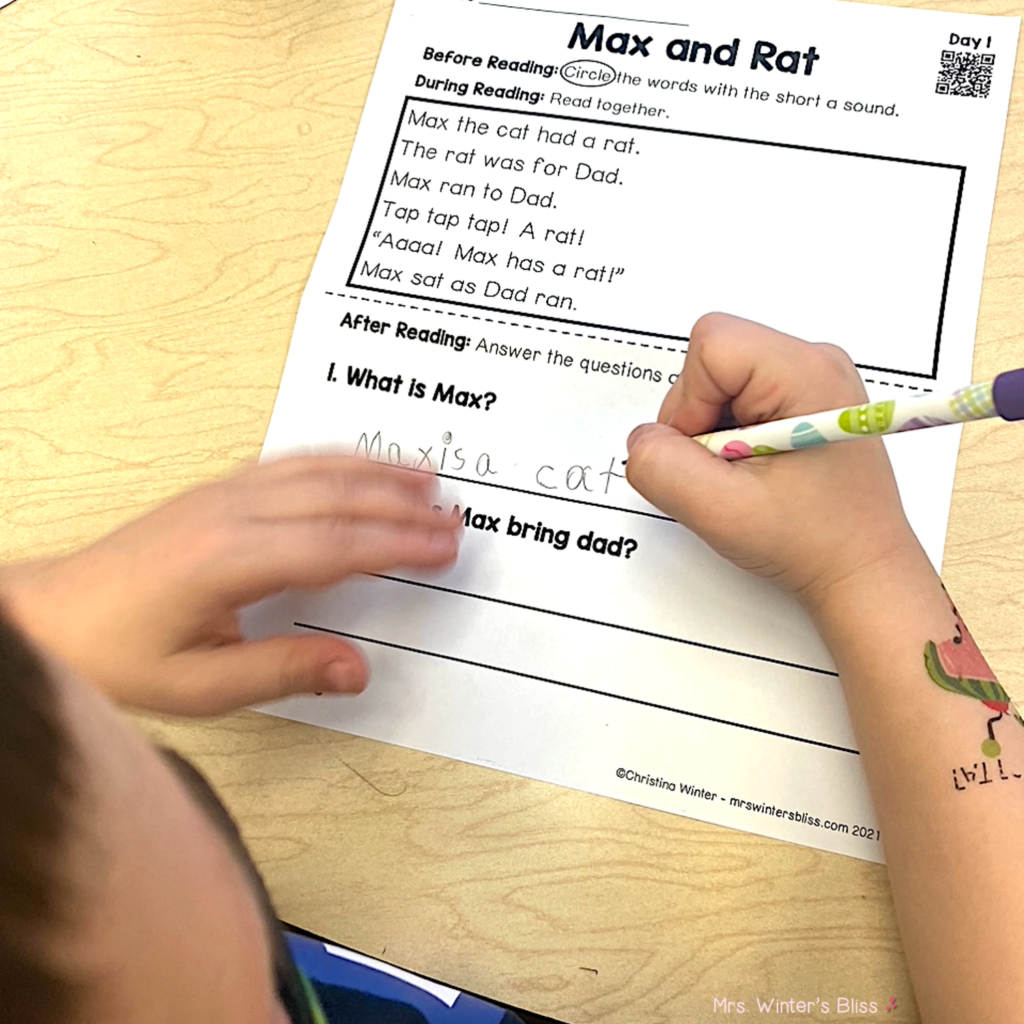
Decodable texts give students practice applying the skills that you have taught to real reading experiences. This connection is essential for building a faster foundation in early reading. As studies have shown, students who use decodable controlled text in their early reading instruction get off to a stronger start in their reading instruction.
These Science of Reading-aligned decodable books with comprehension questions and explicit teacher lesson plans are the perfect resource to support your beginning readers. This resource includes 10 illustrated, decodable books that focus on CVC skills. You’ll also get lesson plans for each book with activities to use before, during and after reading, as well as student printables and audio recordings of each book!
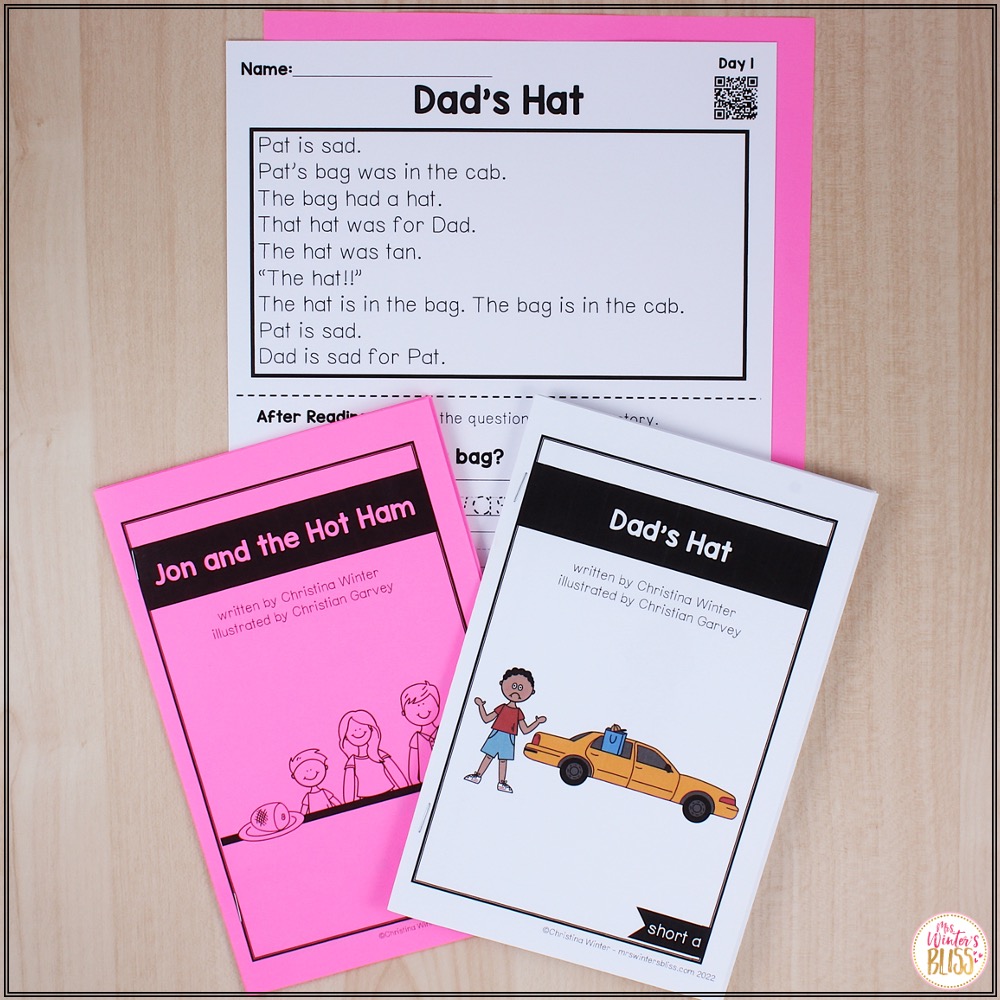
Ready to give them a try? Download 5 FREE CVC decodable books and 5 FREE CVC decodable passages today!

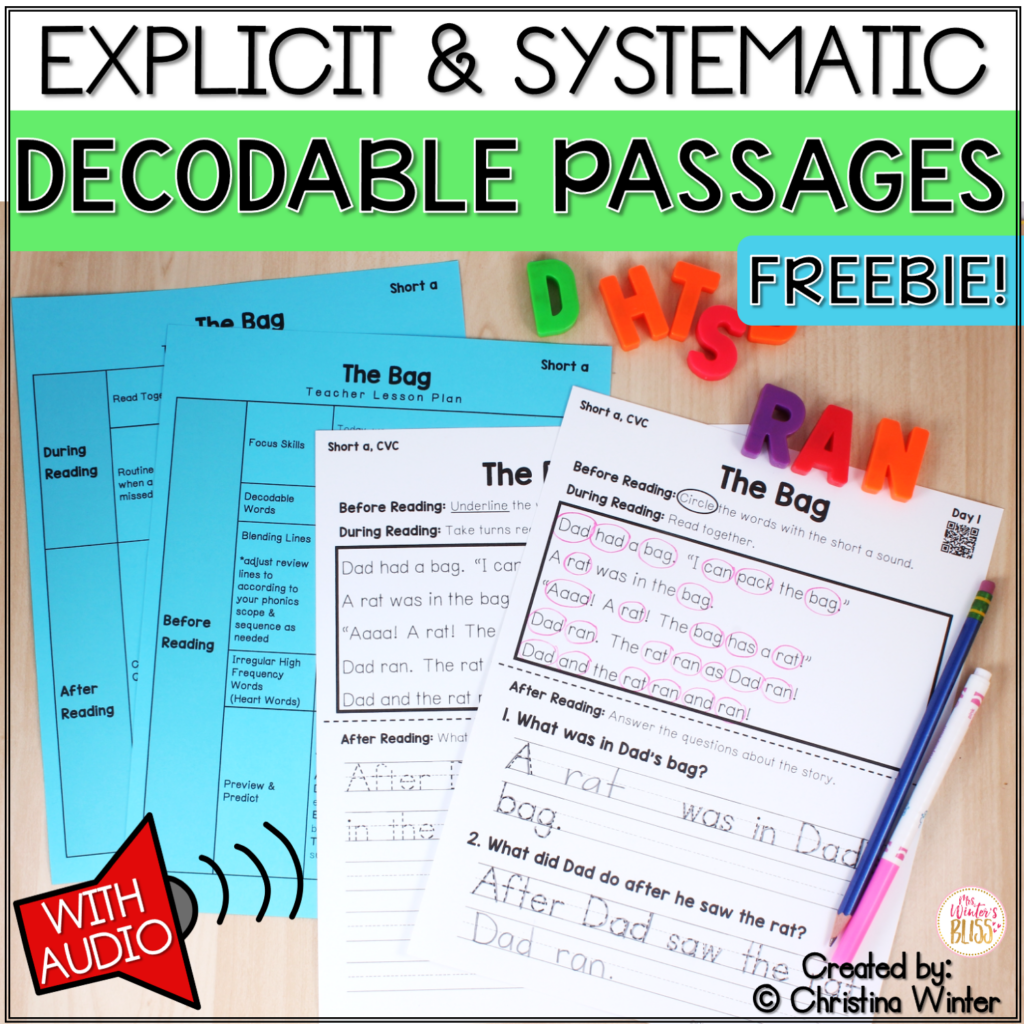
2. Word Mapping
Word mapping activities are a physical way to represent the relationship between the phonemes (sounds) and graphemes (letters). They allow students to physically connect or match the letters with the sounds they represent and help promote the process of orthographic mapping. Ultimately word mapping activities build word recognition and decoding skills that improve fluency in both reading and writing.
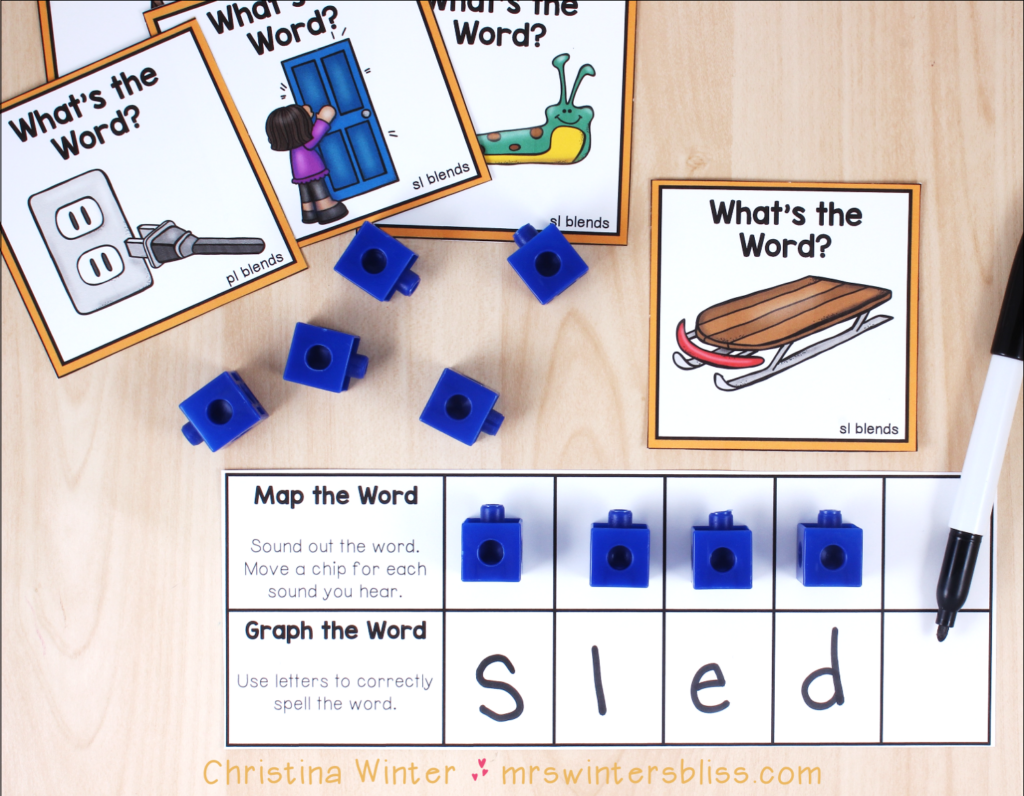
Using my CVC Word Mapping resource, students connect the speech sounds (phonemes) of a word to the letters or letter combinations (graphemes). This process utilizes the oral language processing part of a student’s brain to help them permanently store words in their sight word memory. This resource includes over 120 CVC short vowel words and is perfect for centers, independent and guided practice!
Ready to give Word Mapping a try in your classroom? Grab these FREE CVC Word Mapping activities!
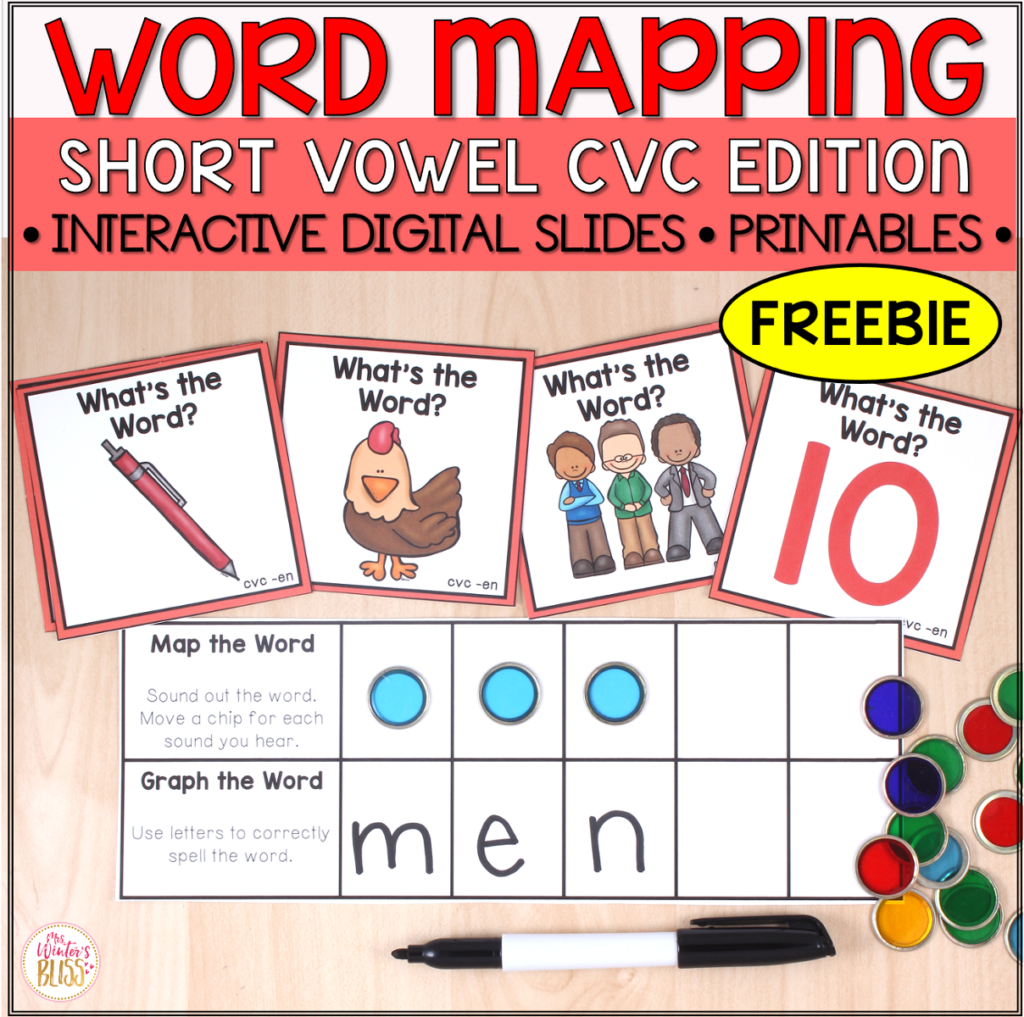
3. CVC Word Ladders
Word ladders or word chains are a fun and challenging word activity that help students master phonics skills and spelling patterns. They are great to use once students have had a lot of exposure to a word pattern. Word ladders require students to think critically to figure out the next word to build, using letter or picture clues for support. Students change just one letter to build a new word.
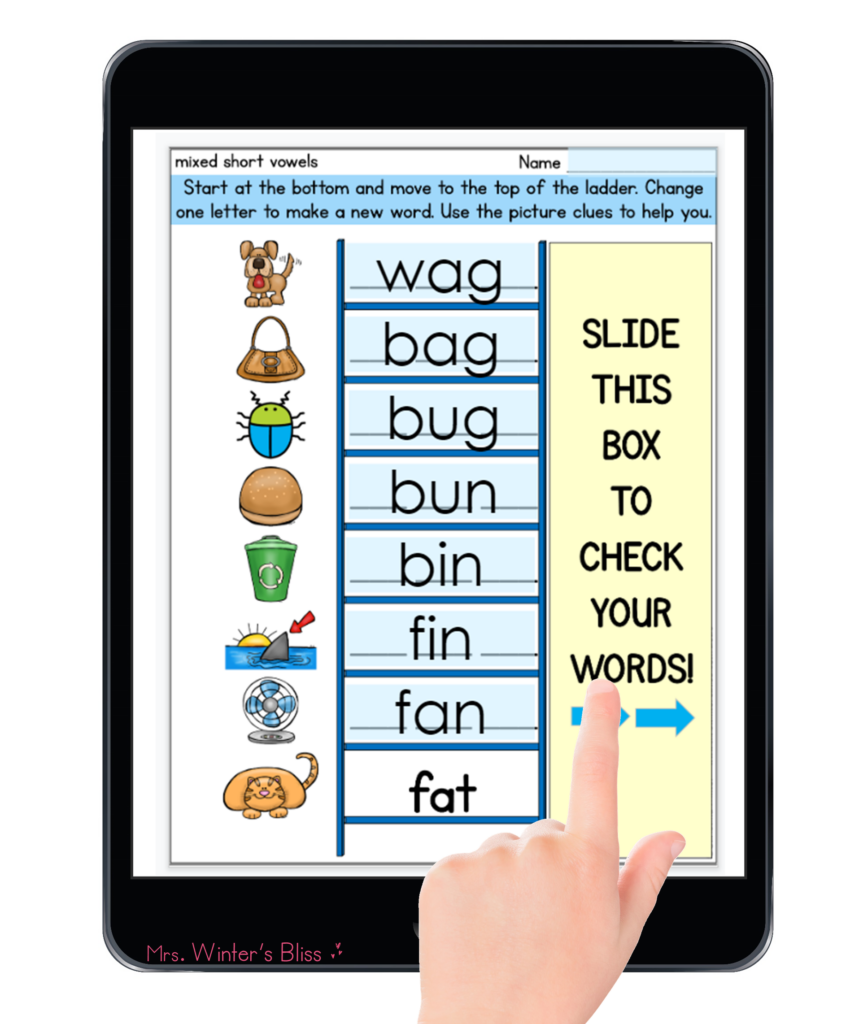
These interactive printable and digital word ladder activities focus on short vowel CVC words. The resource is SELF-CHECKING and NO PREP. It includes 12 CVC word activities where students will change just one letter to build a new word!
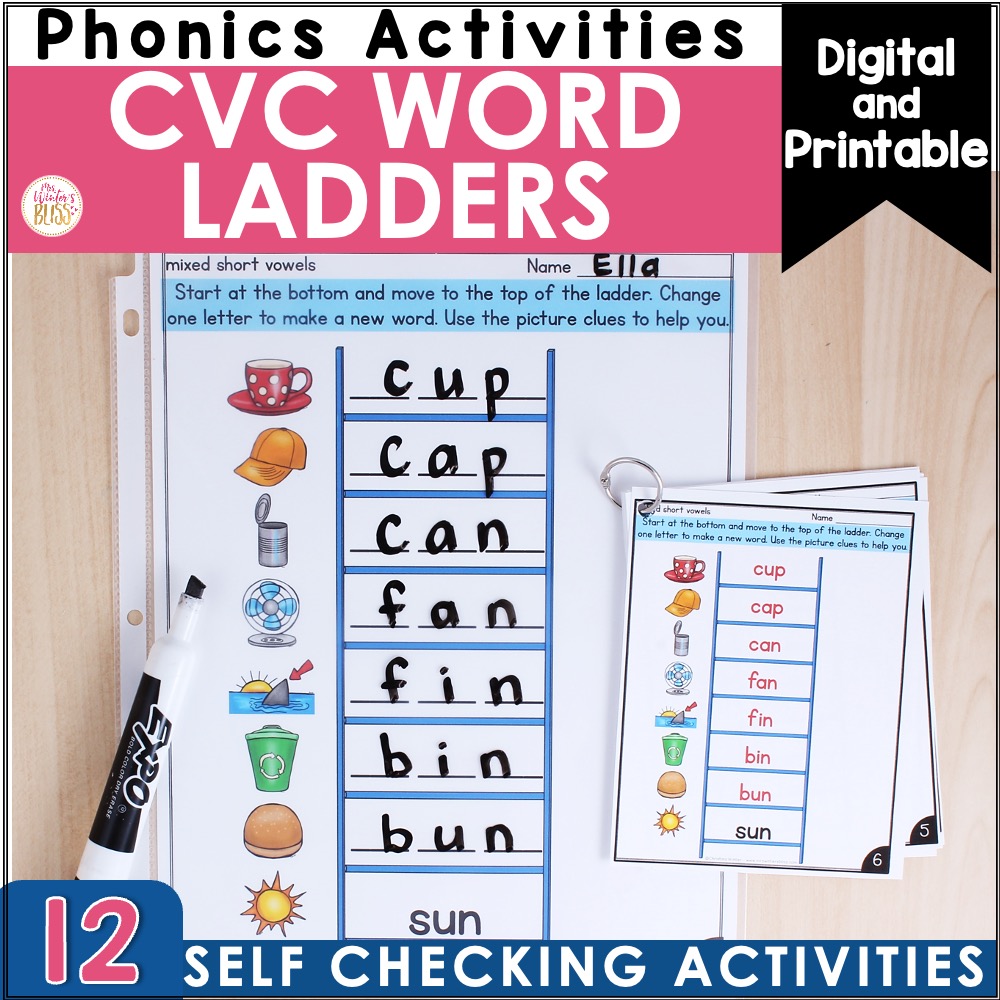
Take a closer look at my CVC Word Ladders here.
I hope the information and resources I shared here today will help you bring effective CVC word instruction to your classroom and students. Be on the lookout for my next post where I’ll dive into how to teach blends and digraphs!
-shop this post-
-
 Decodable Books with Comprehension Questions – CVCEarn 0 Reward Points
Decodable Books with Comprehension Questions – CVCEarn 0 Reward Points
$10.00Rated 5.00 out of 5 based on 8 customer ratings -
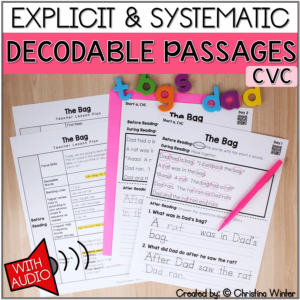 Decodable Passages with Comprehension Questions – short vowel CVCEarn 0 Reward Points
Decodable Passages with Comprehension Questions – short vowel CVCEarn 0 Reward Points
$6.75Rated 5.00 out of 5 based on 27 customer ratings -
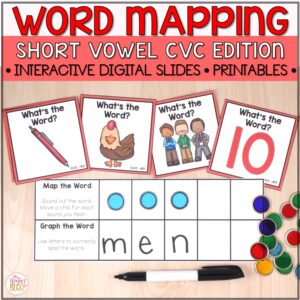 Word Mapping- Connecting Phonemes to Graphemes – CVC print & digital activitiesEarn 0 Reward Points
Word Mapping- Connecting Phonemes to Graphemes – CVC print & digital activitiesEarn 0 Reward Points
$4.50Rated 5.00 out of 5 based on 13 customer ratings -
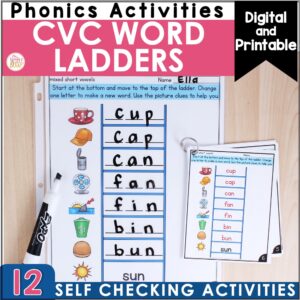 CVC Word Ladders – Printable and Digital Phonics ActivitiesEarn 0 Reward Points
CVC Word Ladders – Printable and Digital Phonics ActivitiesEarn 0 Reward Points
$4.00Rated 5.00 out of 5 based on 12 customer ratings









